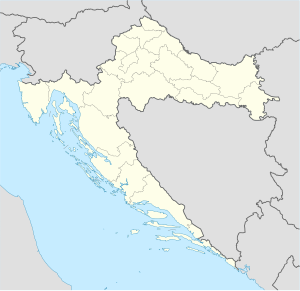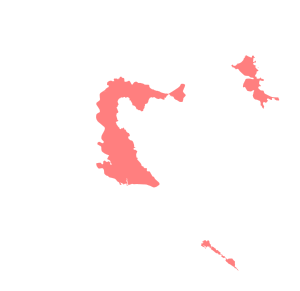Saborsko massacre
| Saborsko massacre | |
|---|---|
| Part of the Croatian War of Independence | |
|
Saborsko on the map of Croatia, JNA/SAO Krajina-held areas in late 1991 are highlighted in red
|
|
| Location | Saborsko, Croatia |
| Date | 12 November 1991 |
| Target | Croat civilians |
|
Attack type
|
Mass murder, ethnic cleansing |
| Deaths | 29 |
| Perpetrators | SAO Krajina Territorial Defence Forces and the Yugoslav People's Army |
The Saborsko massacre (Croatian: Pokolj u Saborskom,Serbian: Operacija Saborsko) was the killing of 29 Croat residents of the village of Saborsko on 12 November 1991, following the seizure of the village in a Yugoslav People's Army (Jugoslovenska Narodna Armija – JNA) and Croatian Serb offensive during the Croatian War of Independence. The fall of the town occurred as part of a JNA and Croatian Serb operation to capture a Croatian-held pocket centered on the town of Slunj, southeast of Karlovac. While the bulk of the civilian population fled with the surviving Croatian forces, those who remained in Saborsko were rounded up and either killed or expelled. The bodies of the victims were retrieved from two mass graves and several individual graves in 1995.
The capture of Saborsko and the killing and expulsion of its civilian population was included in the International Criminal Tribunal for the former Yugoslavia (ICTY) indictments of Milan Babić and Milan Martić, high-ranking officials of the Croatian Serb-declared wartime breakaway region of SAO Krajina. Following the war, the ICTY convicted Babić and Martić for their role in the events. Saborsko was subsequently rebuilt.
In 1990, following the electoral defeat of the government of the Socialist Republic of Croatia, ethnic tensions between Croats and Serbs worsened. The Yugoslav People's Army (Jugoslovenska Narodna Armija – JNA) confiscated Croatia's Territorial Defence (Teritorijalna obrana - TO) weapons to minimize resistance. On 17 August, the tensions escalated into an open revolt by Croatian Serbs, centred on the predominantly Serb-populated areas of the Dalmatian hinterland around Knin, parts of the Lika, Kordun, Banovina and eastern Croatia. This was followed by two unsuccessful attempts by Serbia, supported by Montenegro and Serbia's provinces of Vojvodina and Kosovo to obtain the Yugoslav Presidency's approval for a JNA operation to disarm Croatian security forces in January 1991.
...
Wikipedia


